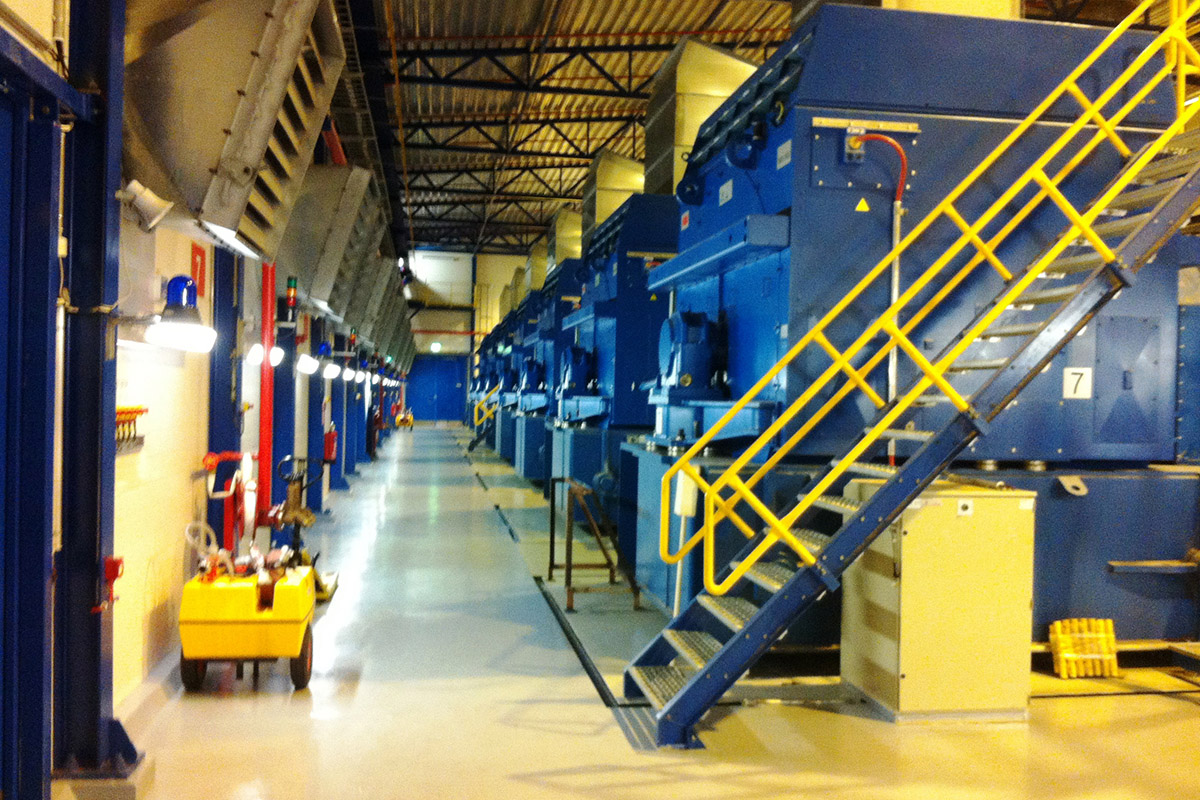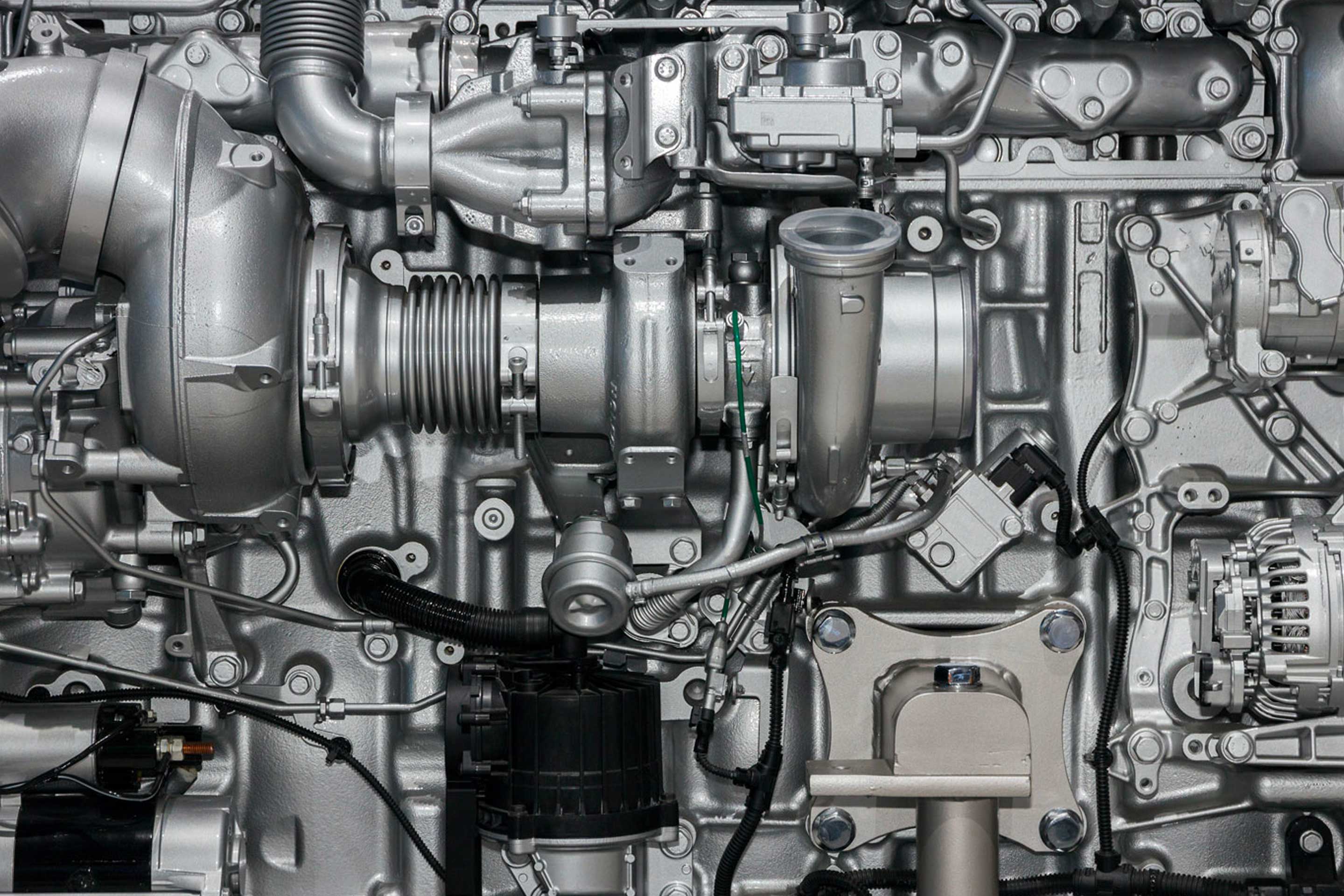Ever wondered why power stations require internal combustion engines? Whether it’s a nuclear plant running diesel engines as backup, peaking plants helping to balance fluctuating demand, or distributed power stations providing electricity in more remote locations, internal combustion engines offer plenty of benefits. As with other applications, turbochargers also play a big supporting role.
Power plants are built in many different forms, powered by nuclear, wind, solar, ocean tides, natural gas, coal and other fuels. Many use turbines to power generators that provide electricity, but internal combustion engines also play a big part in providing alternative means of power.
Plants may group several internal combustion engines together into blocks and use these exclusively to generate power. Some distributed solutions, which exist outside of larger centralized power stations, simply use a single diesel engine as a generator to produce smaller amounts of electricity in more remote locations.
Backup power
Internal combustion engines are often used in power stations as backup power sources, continuing to provide electricity in case of a grid outage or other emergency. Diesel engines are ideal in such situations. They’re relatively cheap when it comes to price per kW, power-dense in terms of kW/volume and weight, and both simple and reliable. They’re also dynamic when it comes to load response, capable of providing backup power to critical systems such as hospitals, data centers, and other essential services in the least amount of time.
Because they generally only need to provide high power for short amounts of time, during blackouts, for example, diesel engines are often used because they provide the most economical solution for generating backup power.
Peaking power
Internal combustion engines are also used as peaking power sources in power stations, which are designed to provide additional power during periods of high demand. Peaking power sources are only used when necessary, which may be a couple of hours at most. As with backup power generation, the fact that diesel engines can provide power almost instantly is also useful when used for peaking power.
Engines used for peaking power are typically larger than those used for generating backup power and can be clustered together to provide more power. They can be installed in stationary power plants or as part of a distributed generation network, comprised of smaller-scale power generation systems located close to where the power is being used.
Distributed generation
An increasing number of internal combustion engines are also being used as distributed generation sources. This allows for more efficient use of the power grid and can help to reduce transmission losses. Engines used for distributed generation can range from small containerized units to larger stationary power plants, depending on the size and needs of the local community.
Internal combustion engines can fill a gap when used alongside renewable energy sources, where consistent energy generation isn’t guaranteed. When windmills or solar panels are unable to provide power due to adverse weather conditions, for example, internal combustion engines can step in.
Internal combustion engines can also provide a surprisingly sustainable option when using bio gas. Combined Heat and Power (CHP) plants can include internal combustion engines as part of a package that generates power by recovering and using heat, and the small size makes it easier to locate CHP solutions closer to areas of demand.
 Inside Cameroon's Kribi power plant
Inside Cameroon's Kribi power plant
Why use internal combustion engines?
There are several key advantages to using internal combustion engines for power generation, not least flexibility and the ability to respond particularly quickly to changes in power demand.
Traditional diesel engines are relatively easy to maintain, with the ability to source parts all around the world, and the ability to run on both diesel and biodiesel makes them a great choice for power generation in more remote locations.
As highlighted above, internal combustion engines are also relatively inexpensive compared to other power generation technologies, making them a popular choice for backup and peaking power applications.
What are the downsides?
Although modern diesel engines are increasingly efficient, and can provide a better choice for smaller power plants thanks to lower costs and greater thermal efficiency, they are not always the best choice for power generation. They can be less efficient than other sources when it comes to providing large amounts of electricity to millions of people, and internal combustion engines also produce harmful emissions when running on traditional fossil fuels. We will see zero-emission options for internal combustion engines once fuels such as hydrogen are available in sufficient quantities, however.
The need for a constant supply of fuel can also provide logistical challenges when using internal combustion engines in more remote locations, occasionally relegating them to backup roles behind renewable alternatives such as solar or wind power.
Where do turbochargers come in?
Internal combustion engines alone may lack the efficiency of other power sources when it comes to generating large amounts of electricity, but adding turbochargers can help, resulting in greater power density, efficiency and cleanness.
Along with supporting the decarbonization journey in the maritime industry, turbochargers also make a huge difference when it comes to power generation. The concept of forced induction has actually been around for well over 100 years, and modern turbochargers are more efficient than ever, with increasingly powerful turbochargers delivering a more cost-effective path towards greater power density without needing to rely on increased displacement.
There are huge savings to be had when it comes to fuel. Using a 2,000 kW engine with a 25-year lifecycle at 50% load as an example, the turbocharged version is likely to be around 14% more efficient. CO2 emissions see a similar drop, with plant owners also benefiting from a reduction in NOx emissions, helping to provide power from internal combustion in the most efficient way possible.














